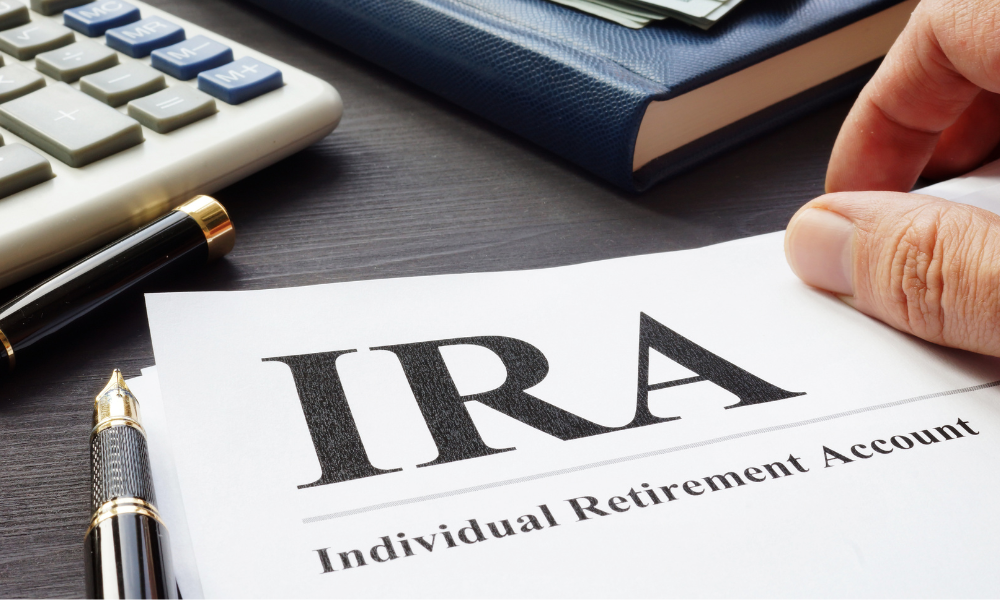

Bold claims of high returns on investments can raise red flags, but when they come from an expert in behavioral economics and financial modeling, it’s at least worth finding out more.
Dr. Dan Geller is the creator of the Money Anxiety Index, author of ‘Build Your Wealth and Keep Your Health’ and lead author of a 2023 peer-reviewed study which shows that when the level of money anxiety increases, people default to their instinctive-response mode making flawed financial decisions that are often wrong and very costly to them.
However, it’s the new IRA account launched by his firm Analyticom which piqued my interest, for its bold claim that it can make retirees millionaires (or ‘Retirenaires’) by accelerating the long-term average annual returns to 20%.
Geller says that his Scientifically Predictable investing model enables the accounts to far exceed a typical 5% annual return based on the rule of 72 model which would take more than 14 years to double the investor’s money when linked to a 5-year Certificate of Deposit. Linking to the S&P 500 could still take more than 7 years. Geller says his account could deliver in 3.6 years.
But how does his model work and how does it produce consistent results?
“Science has established that we have two modes of decision making; instinctive (System 1) and analytical (System 2), and that we alternate between these two modes based on our level of money anxiety,” Geller explains. “When money anxiety is elevated, we tend to make instinctive decisions, and when money anxiety is low, we tend to make analytical decisions. The Scientifically Predictable investing model (SPIM) can project how investors are going to make buy/sell decisions based on the level of money anxiety. Thus, the SPIM is able to identify ETFs that are the least likely to be impacted by instinctive decisions of investors, and therefore, outperform the market.”
The model focuses on investing always in the top 5 ETFs and is designed for self-directed investors.
About that 20% figure; is this based on back-testing, live performance, or a combination?
“It is based on a combination of both for 6 years: 2018 to 2023 a total return of 90.5% as documented in page 19 of the study, plus a return of 29.7% in 2024 actual performance, for a total of 120.7% over 6 years = 20% average per year,” explains Geller.
Geller says that Retirenaire IRA is subject to all rules governing IRA accounts (Taxation etc.), but it is exempt from investment advisory registration based on SEC's publisher's exclusion Section 202(a)(11)(D).
While many will be skeptical, Geller says this new model for IRAs could be a gamechanger.
“This is the greatest opportunity for banks and credit unions to attract new deposits to their institution and to reward their customers with an account that will allow their to retire comfortably,” he concludes.

Rajesh Markan earlier this year pleaded guilty to one count of criminal fraud related to his sale of fake investments to 10 clients totaling $2.9 million.

From building trust to steering through emotions and responding to client challenges, new advisors need human skills to shape the future of the advice industry.

"The outcome is correct, but it's disappointing that FINRA had ample opportunity to investigate the merits of clients' allegations in these claims, including the testimony in the three investor arbitrations with hearings," Jeff Erez, a plaintiff's attorney representing a large portion of the Stifel clients, said.

Chair also praised the passage of stablecoin legislation this week.

Maridea Wealth Management's deal in Chicago, Illinois is its first after securing a strategic investment in April.
Orion's Tom Wilson on delivering coordinated, high-touch service in a world where returns alone no longer set you apart.
Barely a decade old, registered index-linked annuities have quickly surged in popularity, thanks to their unique blend of protection and growth potential—an appealing option for investors looking to chart a steadier course through today's choppy market waters, says Myles Lambert, Brighthouse Financial.
